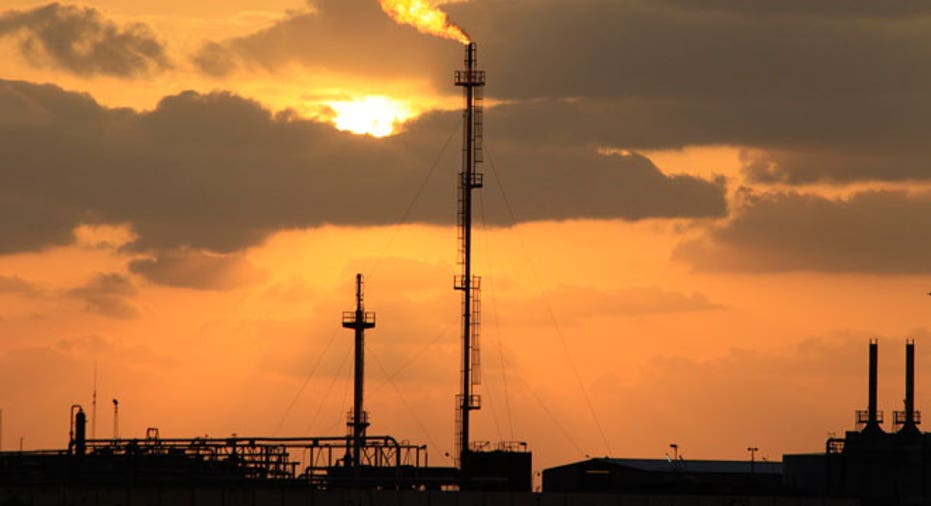Low Stockpile Raises Worries Over U.S. Natural Gas Supplies

The United States faces a natural gas supply shortfall this year despite the country's fracking boom, threatening more price spikes as energy companies struggle to replenish stockpiles drained to critically low levels after a brutal winter.
As the coldest winter in 30 years thaws across North America, some experts worry that stockpiles will not be refilled to levels high enough to meet demand next winter, causing supply disruptions and sudden price surges of the kind that have dented power company earnings and raised residential bills in recent months.
The concerns center on a set of extraordinary circumstances: stocks are at 11-year lows; flat futures prices make it uneconomic for utilities to hold onto gas and burn it later, and a fractured network of pipelines means gas in big producing regions, including the country's biggest Marcellus Shale play centered in Pennsylvania, is stranded away from storage caverns.
Forecasts of a hotter-than-average summer have raised worries that higher demand could add further strain on stockpiles.
To be sure, utility companies still have months to restock and production is growing. In the long term, a number of pipelines scheduled to come online later this year will help ease some of the bottleneck around the Marcellus.
But as the country continues to pump out record amounts of oil and gas from a fracking revolution that took off toward the end of the last decade, some experts say the industry should be more aware of the possibility of a worst-case scenario.
"People are not taking it seriously. The market seems to have become complacent," said Anthony Yuen, natgas analyst at Citigroup in New York.
RECORD DRAW
Utilities pulled a record 3.01 trillion cubic feet (tcf) of gas from storage this winter to meet heating needs, creating massive price volatility in some regions as stockpiles fell to 822 billion cubic feet, the lowest in more than a decade. Stock rebuilds in two of the past three weeks were lower than expected.
"Even after a normal summer, if by August there is only 2.6 trillion cubic feet of gas in storage, the market may start to get really worried," said Yuen.
Getting to 3.7 tcf by the start of the winter, a level considered more comfortable for winter, is "very unlikely", he said. Other analysts say stocks may only get to 3.4 tcf by October.
At the same time, U.S. natural gas futures prices are not rising enough to encourage putting gas in store for sale later in the year, or for drillers to increase output, analysts said.
Prices for October delivery are at $4.66 per million British thermal units, little changed from the May contract of $4.64. Yuen reckons gas prices would have to top $5.50 to entice more drilling.
SUMMER, THE WILD CARD
Much depends on the summer. An active hurricane season, potential drop in drilling activity if prices remain sluggish, coal plant retirements, a bigger-than-expected autumn nuclear refueling season and reduced imports from Canada would all tighten U.S. gas availability.
The gas-directed rig count fell to around 300 in April, the lowest in 21 years, potentially hampering efforts to raise production if needed. Gas rigs peaked at more than 1,600 in 2008 but have since fallen as producers search for more lucrative oil.
The U.S. National Weather Service expects above normal temperatures across most of the country for June, July and August, except for the upper Midwest which is forecast to have normal temperatures.
Utilities say they will get the gas needed, but as in the past winter they may have to pay huge amounts for it.
"We are going to do what we have to do to get the gas we need and into storage," said Alonzo Weaver, vice president of engineering and operations for Memphis Light, Gas and Water, which serves 320,000 customers in Shelby County, Tennessee.
"If we have to go the market to get gas, we will. High gas is bad; no gas is worse."
Others said more pipelines will help fill storage and free up stranded gas in the Marcellus shale formation.
Later this year, 10 new pipelines with a cumulative capacity of about 3.4 billion cubic feet per day (bcfd), or nearly 5 percent of daily output, are due to come online, said Stephen Thumb, principal at Energy Ventures Analysis in Arlington, Virginia.
Eight pipelines with combined capacity of about 2.3 bcfd are scheduled to launch next year, he said.
"Exactly how much stranded production comes online because of these new pipeline projects is a real wild card for the next two years," Thumb said. "We are in trouble if none of these pipelines enter service."



















